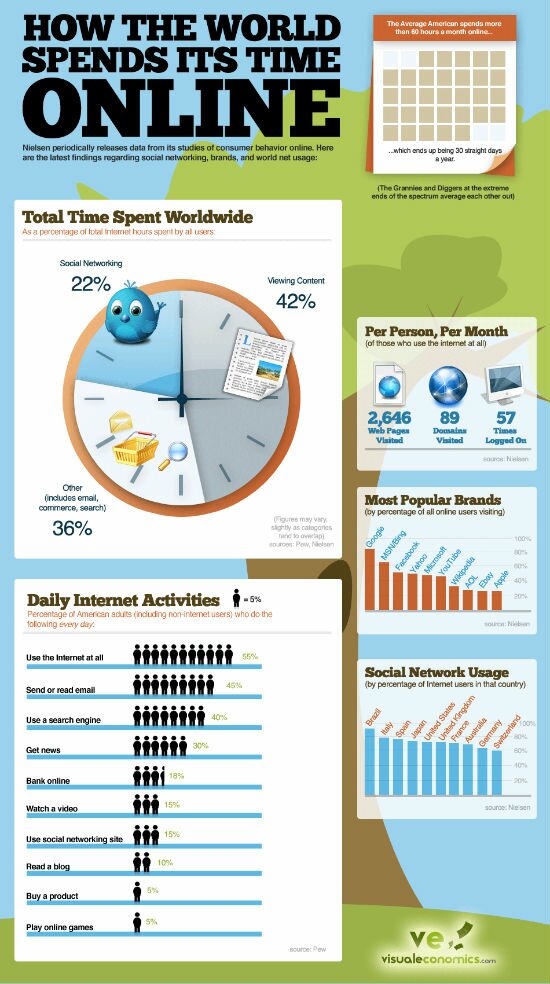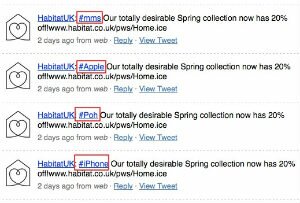It’s that time of the year when we look over the last 12 months to take stock of the year’s successes and failures and create some countdown lists of our favourite things. This week we’re looking at the which social media campaigns have been the most successful in 2010.
 Sesame Street
Sesame Street
As mentioned in a previous post this week, Sesame Street has had a very successful year with video-based social media. Taking inspiration from other popular campaigns, like the Old Spice man, they’ve managed to turn around a number of parody videos in record time. With 281,800+ Twitter followers and 138,700+ Facebook followers (and various character-specific pages), the campaign is a definite success.
 Old Spice
Old Spice
Probably the most famous campaign of the year, the Old Spice campaign did an excellent job of bringing the brand right back into the 21st century. Funny adverts won the YouTube visitors over, while a quick response to those who commented with follow up videos won the social media experts over.
The result? It’s always difficult to tell with sales, but initial reports after the first couple of months suggest an increase of 107% of the Old Spice bodywash.
 Tippex
Tippex
The Tippex “A hunter shoots a bear!” video was one of the first YouTube videos to really embrace the interactivity feature. By giving visitors the opportunity to choose what the hunter would do to the bear, using the Tippex mouse, the company produced a viral that mimicked the popularity of the Old Spice videos.
Sales are yet to be announced, and we doubt it will have the effect the Old Spice man had, but with Christmas card time just around the corner, it’ll be interesting to see if the video reminds people of the product.
Domino’s
 Domino’s adopted a Foursquare check-in strategy early on, and benefited from a 29% pre-tax profit in the first half of the year. By giving out free pizza to every mayor (the person who has ‘checked in’ to that store most regularly), they increased visitors on foot and online.
Domino’s adopted a Foursquare check-in strategy early on, and benefited from a 29% pre-tax profit in the first half of the year. By giving out free pizza to every mayor (the person who has ‘checked in’ to that store most regularly), they increased visitors on foot and online.
Proof that jumping on the wagon before your competitors will nearly always keep you one step ahead.
Groupon
 A type of social media in its own right, Groupon sells reduced deals for a short period of time, once a certain number of people have signed up for it. A couple of months ago, they realised ‘Grouspawn’, a dating website for bargain-hunters. The social twist? A couple that conceives a baby after meeting on the site win a scholarship for the child.
A type of social media in its own right, Groupon sells reduced deals for a short period of time, once a certain number of people have signed up for it. A couple of months ago, they realised ‘Grouspawn’, a dating website for bargain-hunters. The social twist? A couple that conceives a baby after meeting on the site win a scholarship for the child.
While it’s unclear what effect Grouspawn had on Groupon’s sales, it’s clear that the company has an innovative approach to their social media. Their strategy is made up of a strong affiliate scheme, the adoption of ‘Superlocals’ who write regular local reviews, and Twitter and Facebook for every town. By realising that word of mouth and social interaction are the keys to expansion, Groupon have dominated the group-purchasing market, and continue to do so.
Coca Cola
Coco Cola’s Facebook page has been widely complimented for its early adoption of an interactive landing page. Regular videos, blogs and discussions on the page keep fans hooked, and coming back.
A great example that a simple, consistent campaign is just as effective as something flashy.
 Starbucks
Starbucks
Back in June this year, a survey of brands revealed that Starbucks was the most popular brand on the social web. Their high level of followers is attributed to listening and engaging to their customers, and asking their followers to spread the word about their page. Their ability to converse with their customers and find out what they want has led to a Facebook page that is effectively customer-built.
Compare the Market
 The furry star of the Compare the Meercat/Market adverts has been a cult figure for a few years, and the company made the smart decision to maximise on that popularity. Apps for the iPhone, a , and regular adverts and YouTube videos kept the popularity of the meercat going.
The furry star of the Compare the Meercat/Market adverts has been a cult figure for a few years, and the company made the smart decision to maximise on that popularity. Apps for the iPhone, a , and regular adverts and YouTube videos kept the popularity of the meercat going.
Are you more likely to head to the friendly meercat company, or the company with an irritating opera singer?
E.L.F (Eyes Lips and Face)
 Brands that only sell online benefit most from social media, as they lack the offline presence on the high street. However, selling online usually means a company can offer lower priced items as they cutting out the middleman.
Brands that only sell online benefit most from social media, as they lack the offline presence on the high street. However, selling online usually means a company can offer lower priced items as they cutting out the middleman.
E.L.F is a prime example of a company who offers a low cost product through the medium of social media. Regular discounts for Twitter and Facebook users once thresholds are reached, a blogger outreach and a YouTube channel featuring many of the up-and-coming beauty bloggers has led to word of the new brand spreading like wildfire.
The result is a with over 87,000 fans, who constantly update the page with their own reviews and discussions of the products.
Skittles
 The confectionery brand has been building its social media campaign over the past couple of years, and it’s finally paying off. Sitting third behind Starbucks and Coca Cola among U.S brands, it has over 13 million Facebook fans.
The confectionery brand has been building its social media campaign over the past couple of years, and it’s finally paying off. Sitting third behind Starbucks and Coca Cola among U.S brands, it has over 13 million Facebook fans.
The high number of followers is down to the promotions they offer, like 2 for 1s and money off vouchers.
What has been your favourite social media campaign this year?

 Old Spice
Old Spice
 Domino’s adopted a Foursquare check-in strategy early on, and benefited from a 2
Domino’s adopted a Foursquare check-in strategy early on, and benefited from a 2 A type of social media in its own right, Groupon sells reduced deals for a short period of time, once a certain number of people have signed up for it. A couple of months ago, they realised
A type of social media in its own right, Groupon sells reduced deals for a short period of time, once a certain number of people have signed up for it. A couple of months ago, they realised 
 Starbucks
Starbucks The furry star of the Compare the Meercat/Market adverts has been a cult figure for a few years, and the company made the smart decision to maximise on that popularity. Apps for the iPhone, a , and regular adverts and YouTube videos kept the popularity of the meercat going.
The furry star of the Compare the Meercat/Market adverts has been a cult figure for a few years, and the company made the smart decision to maximise on that popularity. Apps for the iPhone, a , and regular adverts and YouTube videos kept the popularity of the meercat going. Brands that only sell online benefit most from social media, as they lack the offline presence on the high street. However, selling online usually means a company can offer lower priced items as they cutting out the middleman.
Brands that only sell online benefit most from social media, as they lack the offline presence on the high street. However, selling online usually means a company can offer lower priced items as they cutting out the middleman. The confectionery brand has been building its social media campaign over the past couple of years, and it’s finally paying off. Sitting third behind Starbucks and Coca Cola
The confectionery brand has been building its social media campaign over the past couple of years, and it’s finally paying off. Sitting third behind Starbucks and Coca Cola 



